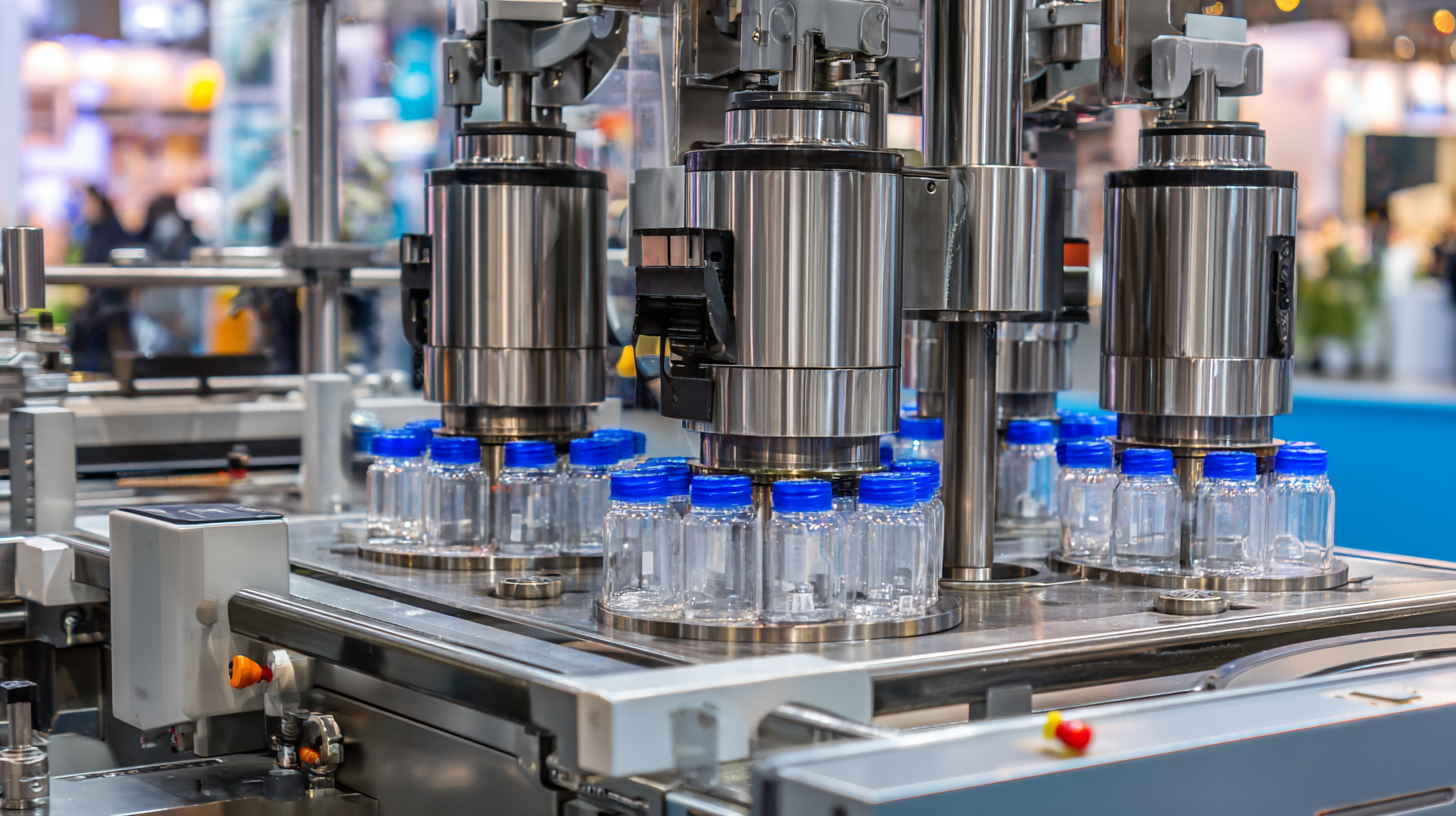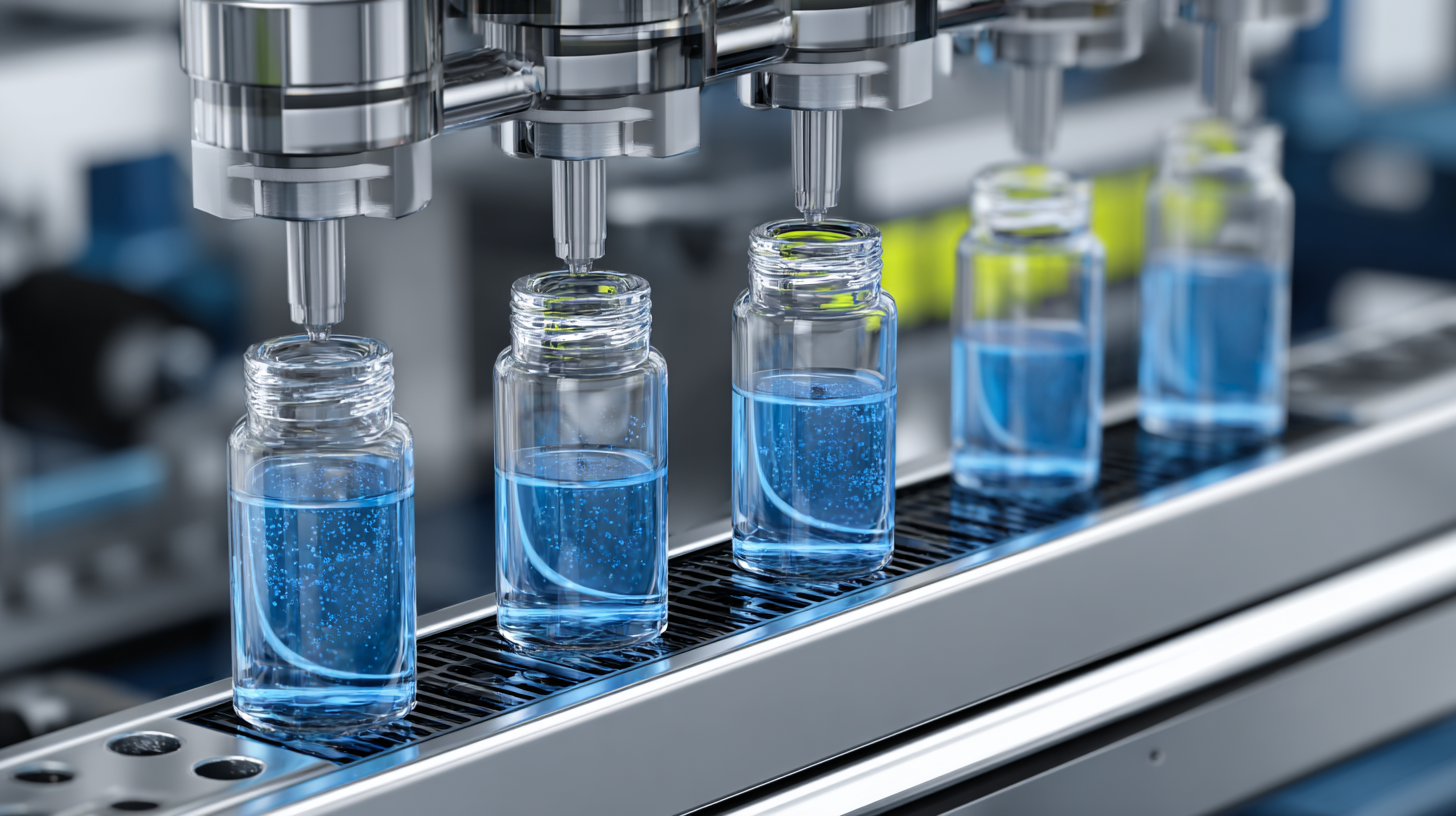Automated Dispensing Robot Videos
A World of Robotic Dispensing and Assembly SolutionsThe Future of Liquid Dispensing Equipment Innovations Driving Efficiency
In an era where efficiency and precision are paramount, the advancements in Liquid Dispensing Equipment are taking center stage in manufacturing. As we embrace a future driven by innovation, the importance of world-class manufacturing capabilities becomes increasingly evident, with Chinese enterprises leading the way in exporting cutting-edge technology globally. The evolution of liquid dispensing systems not only enhances operational efficiency but also maximizes the quality of products across various industries. This blog explores the latest breakthroughs in liquid dispensing technology, underscoring how these innovations are transforming manufacturing processes and establishing new standards of excellence. With a keen focus on optimizing performance and reducing waste, the journey of liquid dispensing equipment is set to revolutionize the way we approach production in a rapidly changing marketplace.

Identifying Key Features of High-Quality Liquid Dispensing Equipment
When it comes to liquid dispensing equipment, quality is paramount for ensuring operational efficiency and precision in various industries. High-quality equipment should feature advanced flow control mechanisms that allow for accurate dispensing of various liquids, minimizing waste and ensuring consistency. Look for systems equipped with smart sensors that monitor flow rates and prevent over-dispensing, thereby enhancing productivity and reducing costs.
Another essential characteristic of top-tier liquid dispensing equipment is its versatility. Versatile dispensers can handle a range of liquid types, from viscous solutions to volatile substances, making them suitable for diverse applications. Additionally, user-friendly interfaces with programmable settings can significantly streamline operations, allowing operators to quickly adjust parameters based on specific requirements. By focusing on these key features, businesses can select liquid dispensing equipment that not only meets their current needs but is also adaptable for future innovations.
Evaluating the Manufacturer's Industry Experience and Expertise
When evaluating liquid dispensing equipment, the manufacturer’s industry experience and expertise play a pivotal role in driving
innovation and efficiency. According to a recent report by MarketsandMarkets, the global
liquid dispensing market is projected to reach $4.7 billion by 2025, growing at a CAGR of 6.5%. This growth
is increasingly influenced by manufacturers that not only understand current trends but are also adept at anticipating
future needs. Companies with extensive industry experience have a proven track record of developing robust solutions that
adapt to evolving technological landscapes.
Manufacturers that invest in research and development, coupled with their technical
expertise, are positioned to introduce cutting-edge products that enhance operational efficiency. A study from Grand View Research
indicates that advancements in automation and smart dispensing systems can lead to a 20% reduction
in material wastage, significantly improving cost-effectiveness for businesses. Moreover, manufacturers with deep-rooted
knowledge often excel in providing comprehensive support and tailored solutions, ensuring that clients effectively leverage
new technologies. Thus, choosing a manufacturer with substantial industry experience is essential for businesses aiming to enhance
their liquid dispensing processes while staying ahead of the competition.

Understanding Certifications and Standards for Liquid Dispensing Equipment
Understanding certifications and standards for liquid dispensing equipment is crucial as industries strive for efficiency and reliability. These certifications ensure that the equipment meets specific safety and performance benchmarks, which are essential in manufacturing, pharmaceutical, and food processing sectors. Compliance with standards set by organizations such as the International Organization for Standardization (ISO) and the American Society for Testing and Materials (ASTM) not only enhances product quality but also increases consumer confidence. Companies that prioritize certification demonstrate their commitment to excellence and regulatory adherence, which can significantly impact their market competitiveness.
Moreover, as technology progresses, the standards for liquid dispensing equipment continue to evolve. Innovations such as automation and smart dispensing systems are changing how businesses operate, making it imperative for manufacturers to stay updated with the latest certifications. Emphasizing these standards can lead to improved energy efficiency, reduced waste, and enhanced operational performance. By understanding and implementing these certifications, businesses can streamline their processes and ensure that their liquid dispensing equipment is both effective and compliant, ultimately contributing to a more sustainable future in their respective industries.
The Future of Liquid Dispensing Equipment Innovations Driving Efficiency
| Innovation Type | Description | Efficiency Gains (%) | Certifications | Standard Compliance |
|---|---|---|---|---|
| Automated Dispensing Systems | Systems that automate the dispensing process to minimize errors and increase speed. | 30 | ISO 9001 | ASTM D4052 |
| Smart Liquid SondexMachinesrs | SondexMachinesrs equipped with IoT technology for real-time monitoring and control. | 40 | CE Marking | EN 13485 |
| Precision Mechatronics | Advanced mechanical control systems for precise flow rates. | 25 | FDA Approved | ISO 13485 |
| Mobile Dispensing Units | Portable units designed for on-site dispensing of liquids. | 20 | UL Listed | ISO 9001 |
Analyzing Customer Reviews and Case Studies for Manufacturer Reliability
In the ever-evolving landscape of liquid dispensing equipment, customer reviews serve as a crucial compass guiding manufacturers towards innovation and reliability. By analyzing feedback from users across various industries, it becomes evident that efficiency in performance is a common theme. Many customers emphasize the importance of consistency and accuracy in dispensing liquids, highlighting how such qualities not only minimize waste but also significantly reduce operational costs. The data collected from these reviews often reveals a direct correlation between user satisfaction and the quality of engineering behind the dispensing equipment.

Case studies further illuminate the importance of understanding customer needs. One notable example showcases a manufacturer that implemented user suggestions to simplify maintenance procedures. This change not only enhanced the product's reliability but also increased customer loyalty, demonstrating the power of listening and adapting to user requirements. As manufacturers continue to innovate, the insights garnered from customer experiences will be invaluable in shaping the future of liquid dispensing technologies, ensuring that efficiency and dependability are at the forefront of design and functionality.
Exploring After-Sales Support and Service Options from Manufacturers
The evolution of after-sales support and service options is rapidly transforming the landscape for consumers and manufacturers alike. Data-driven approaches, such as virtual twins and advanced analytics, are now critical in optimizing performance and enhancing customer service. A recent study indicates that companies leveraging these innovative tools experience an up to 20% increase in operational efficiency. As consumer expectations rise, the balance has shifted; customer experience is now the focal point driving automotive success, surpassing traditional hardware engineering as the key competitive battleground.
Tips for enhancing after-sales support include investing in training for technicians, which not only improves service quality but also fosters stronger customer relationships. Furthermore, incorporating customer feedback metrics can significantly influence firm performance, leading to adjustments in service delivery that align more closely with client needs. Companies looking to build a robust after-sales strategy should also consider integrating digital solutions for real-time performance tracking and support, ensuring they remain agile in a constantly evolving market.
